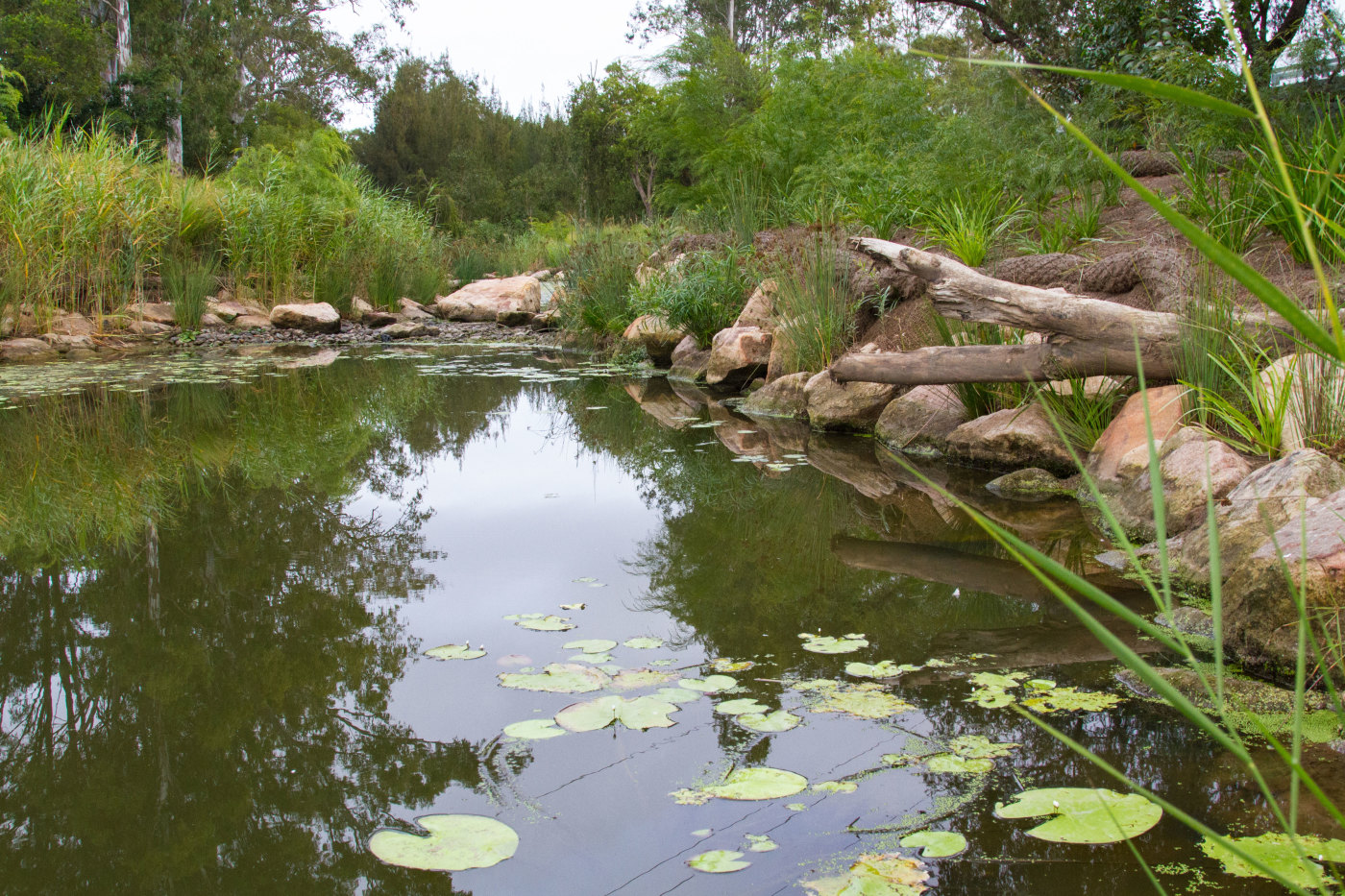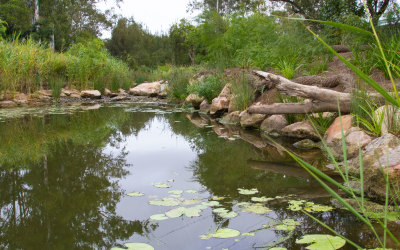Green engineering — rehabilitating Bundamba Creek
How do you redirect a major urban creek to create a new ecologically-sensitive waterway? Bligh Tanner recently oversaw the realignment of 150 m of Bundamba Creek, to help address issues of local flooding and contaminated land, as part of a brand new warehouse development in Bundamba.
The project was particularly complex, with many challenges encountered along the way. “We needed a design that struck the right balance between allowing for the natural movement and ecological dynamics of a waterway, and also protecting nearby infrastructure from potential scour and erosion,” said Alan Hoban, Bligh Tanner’s project leader. The final design is an exemplar of natural channel design principles, featuring rock riffles, stepping stones for adventurous play, salvaged logs for habitat, and a locally-sensitive plant palette. Local school kids even got in on the action at a Community Planting Day.
Careful attention to protecting water quality during construction was paramount to this project. Water quality was managed with thoughtful staging and sequencing of works—this in itself was significantly challenging with the difficult soils found on site. “We then had two unseasonal floods come through the site, which really tested the resilience of the design,” explains Alan.
Thankfully, the plants have really taken off over the past summer, and the fish, birds and turtles have made the site their home again, including the rare eel-finned catfish which hadn’t been seen in this area for some time.





